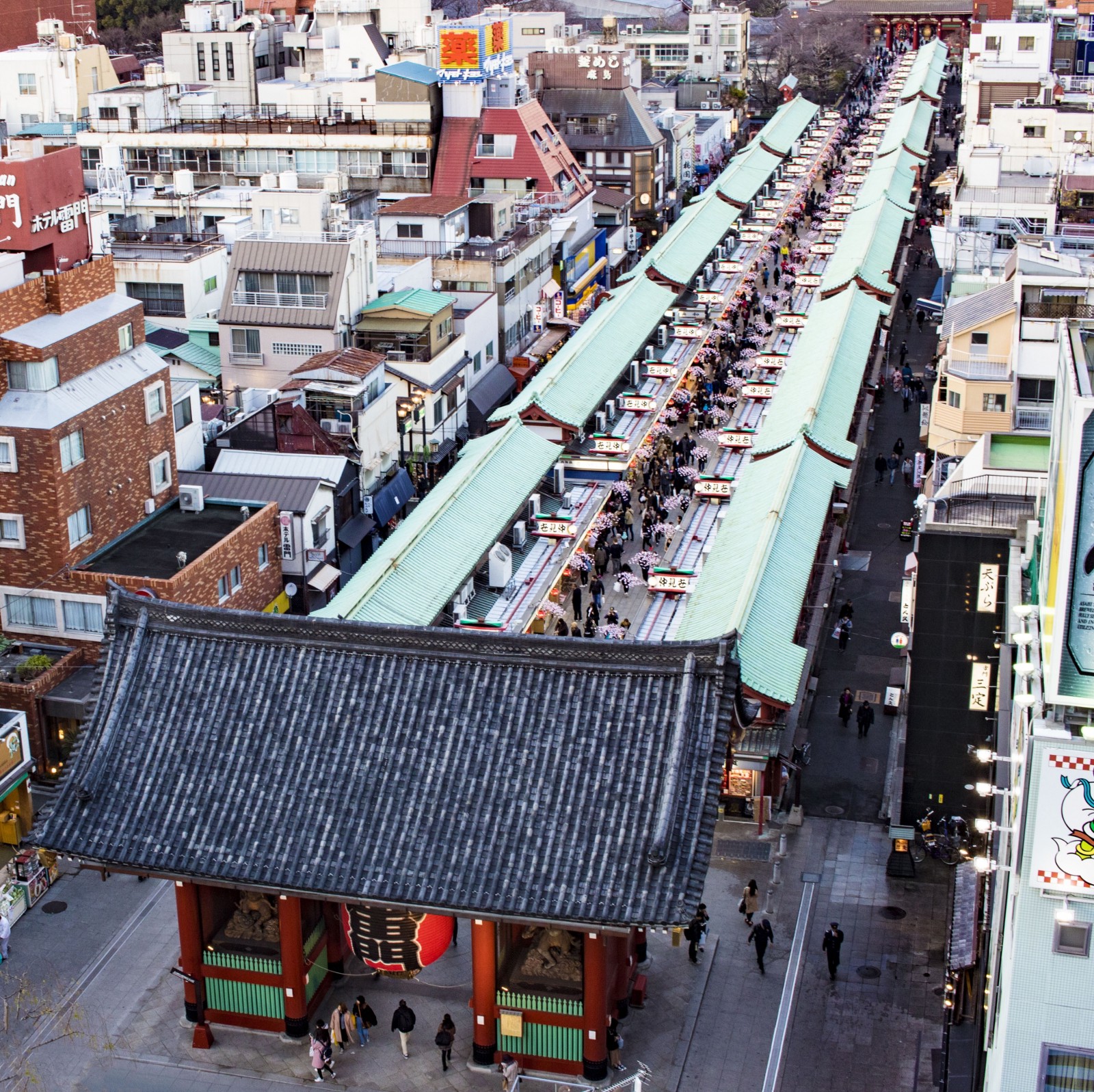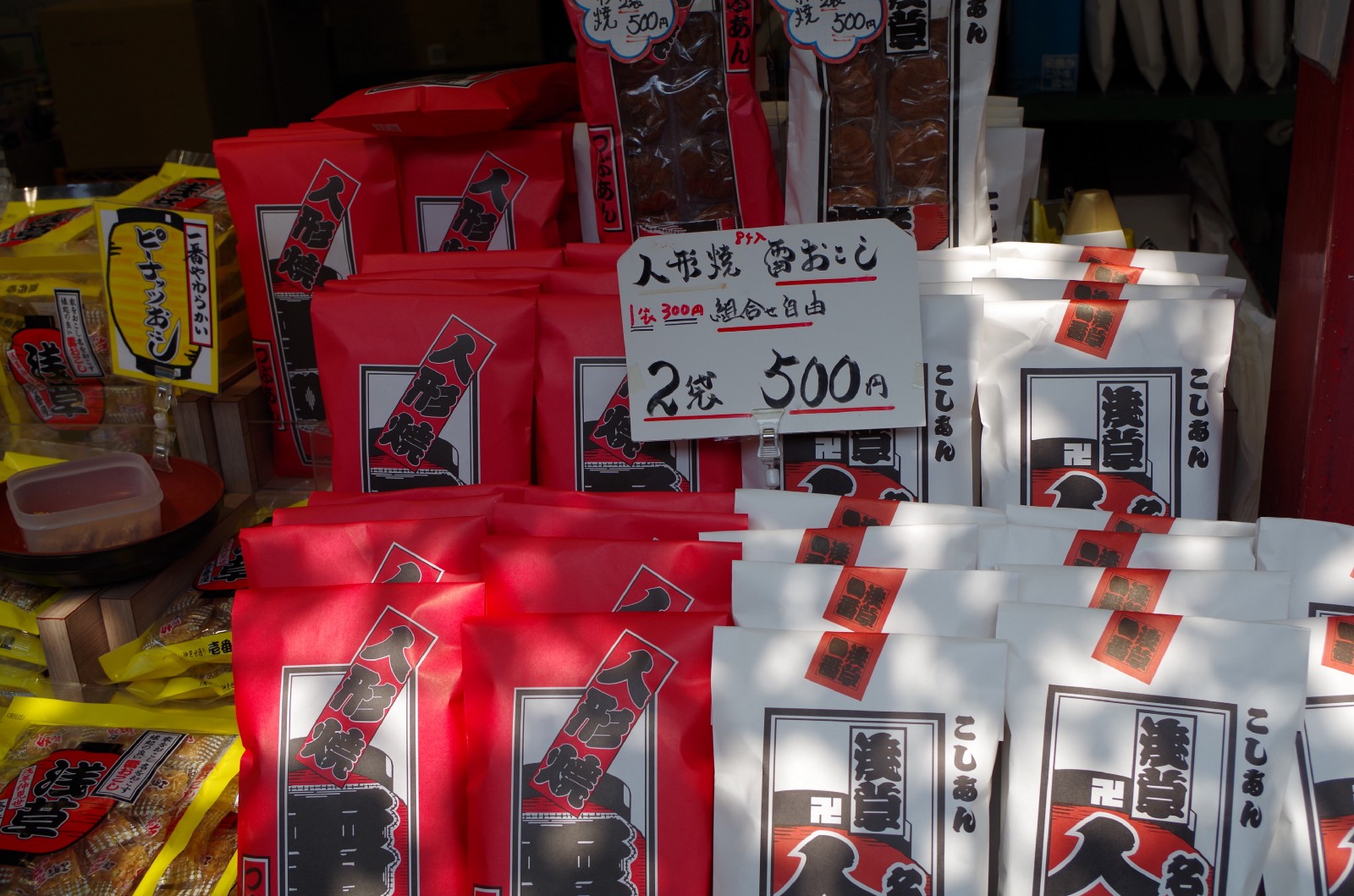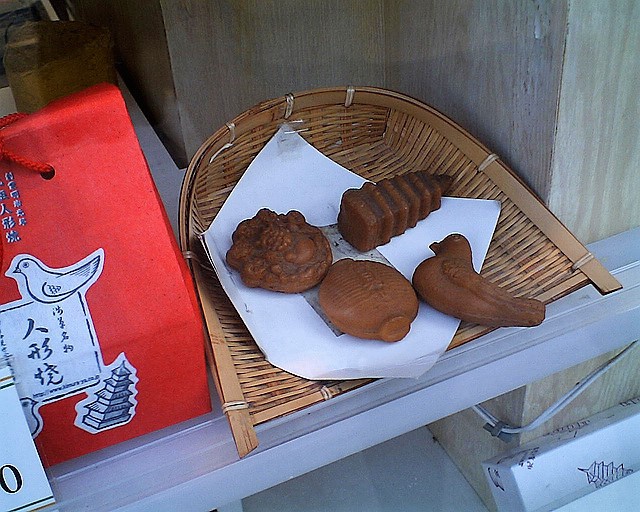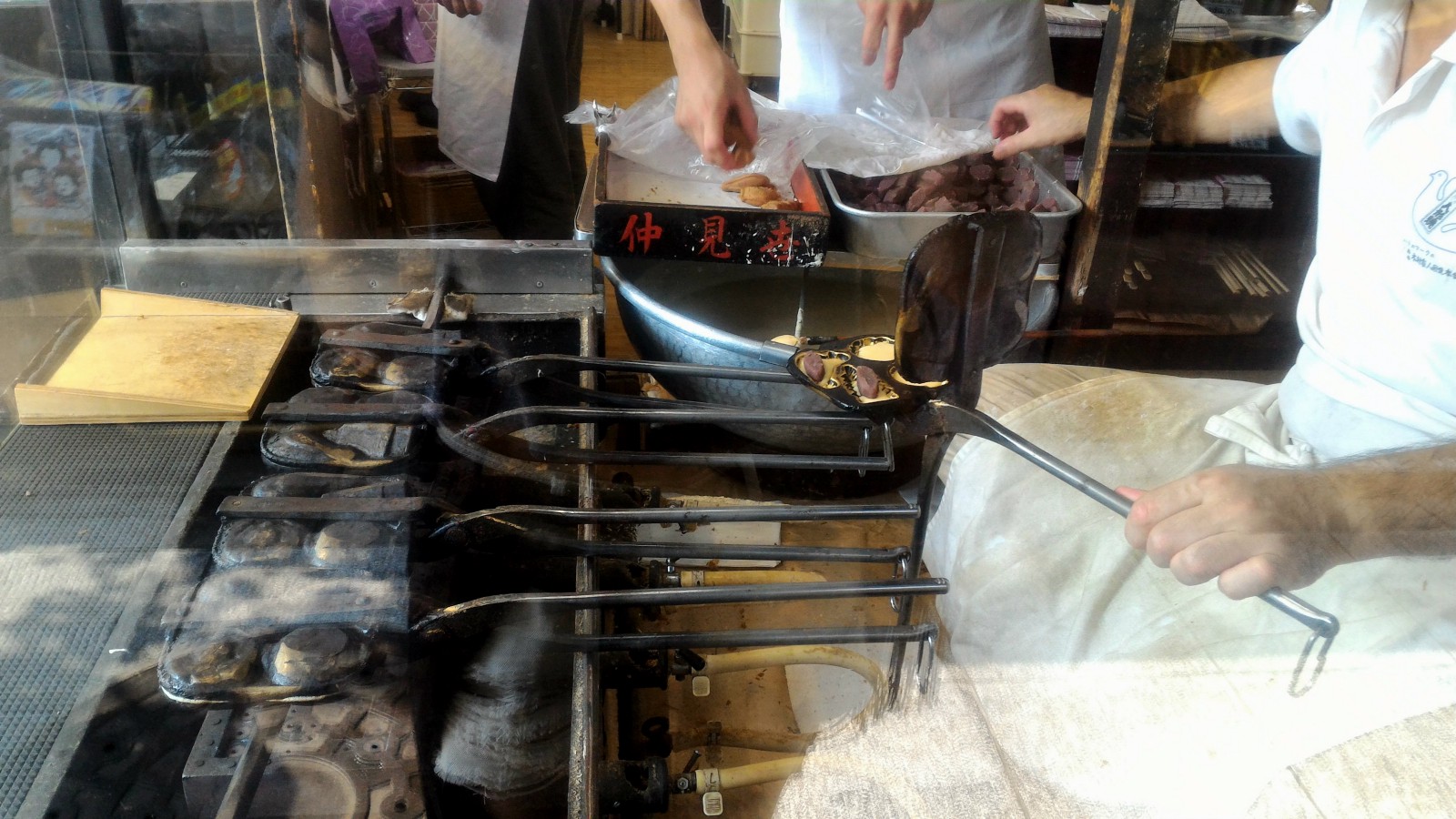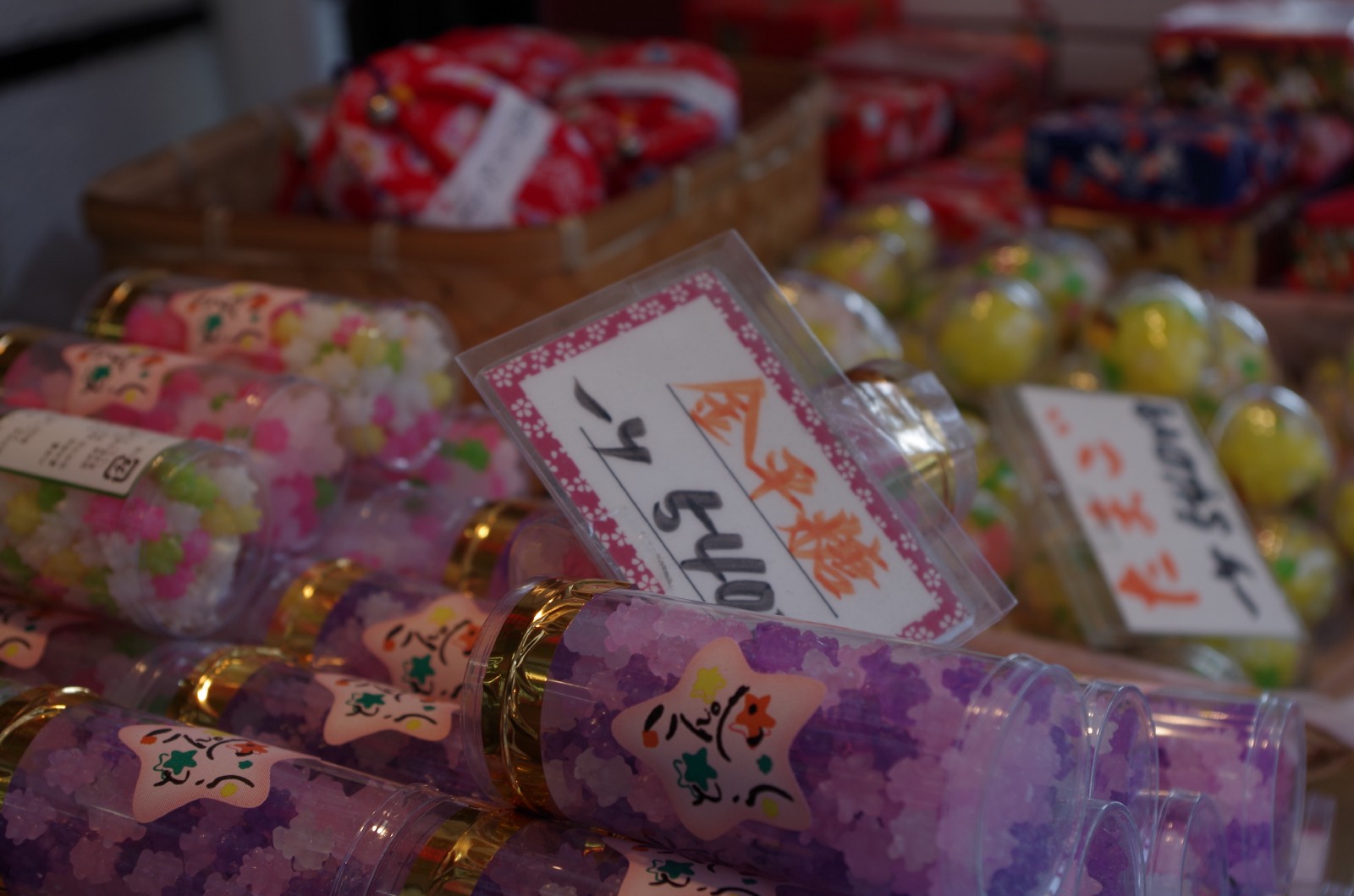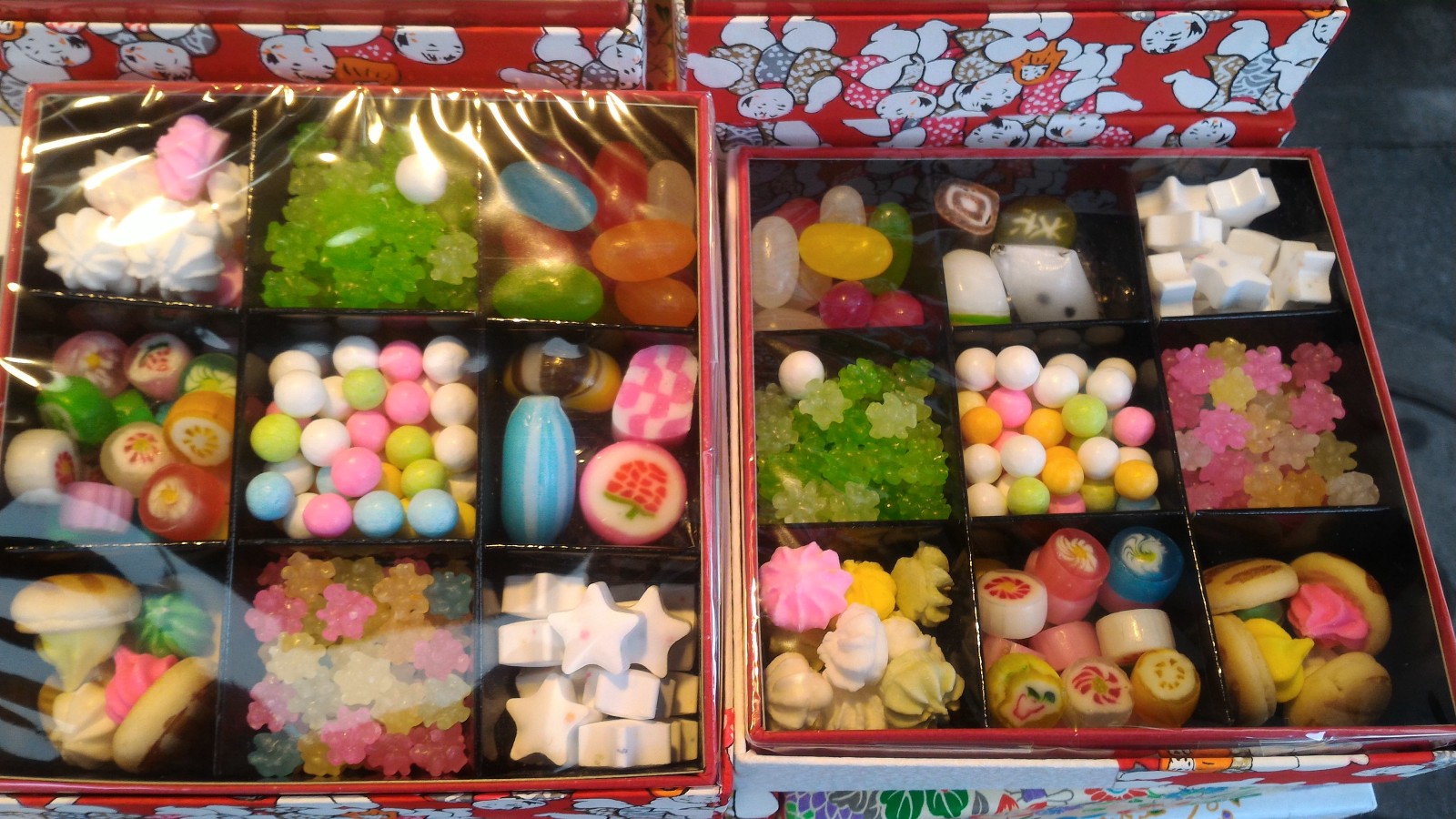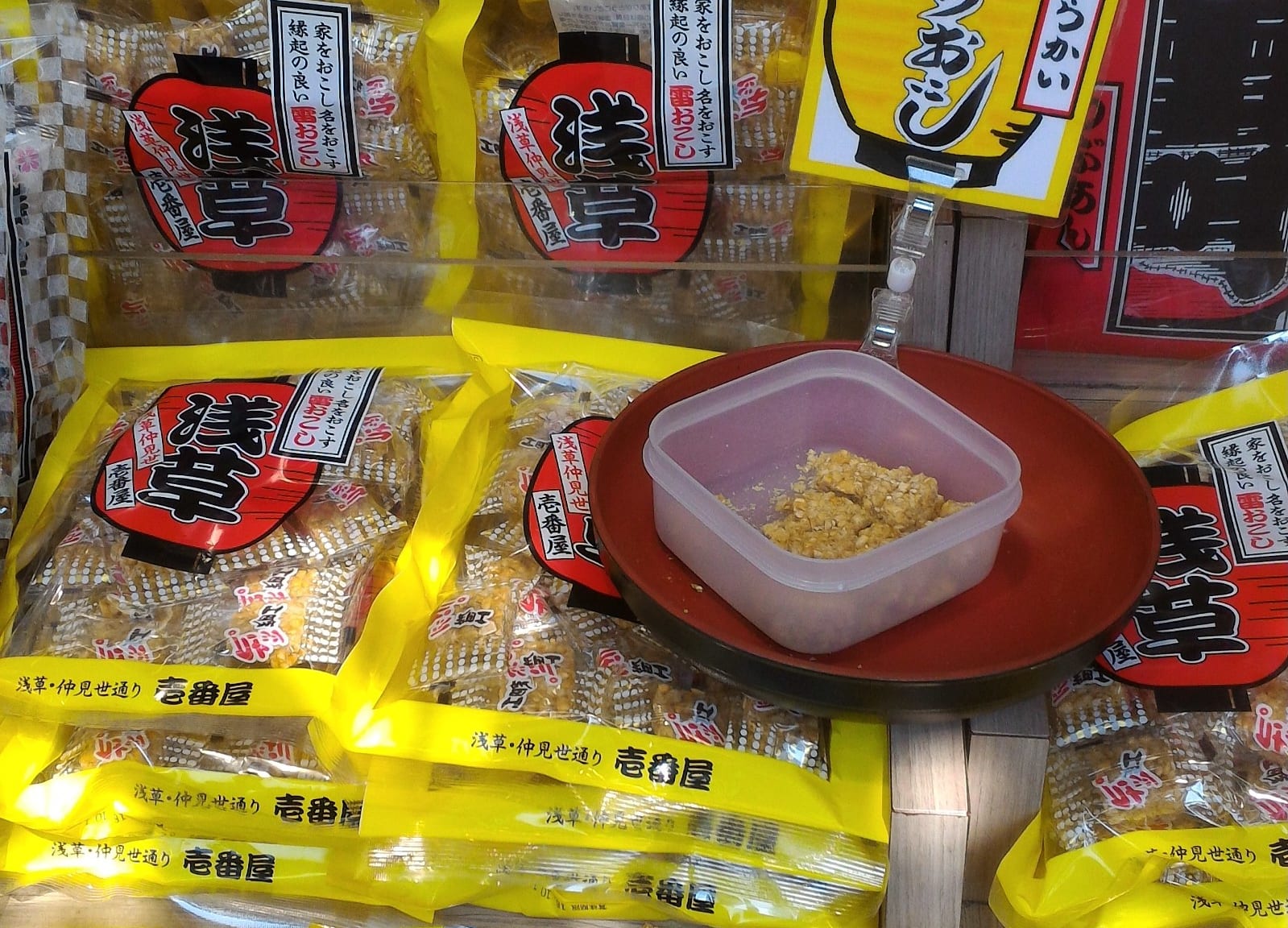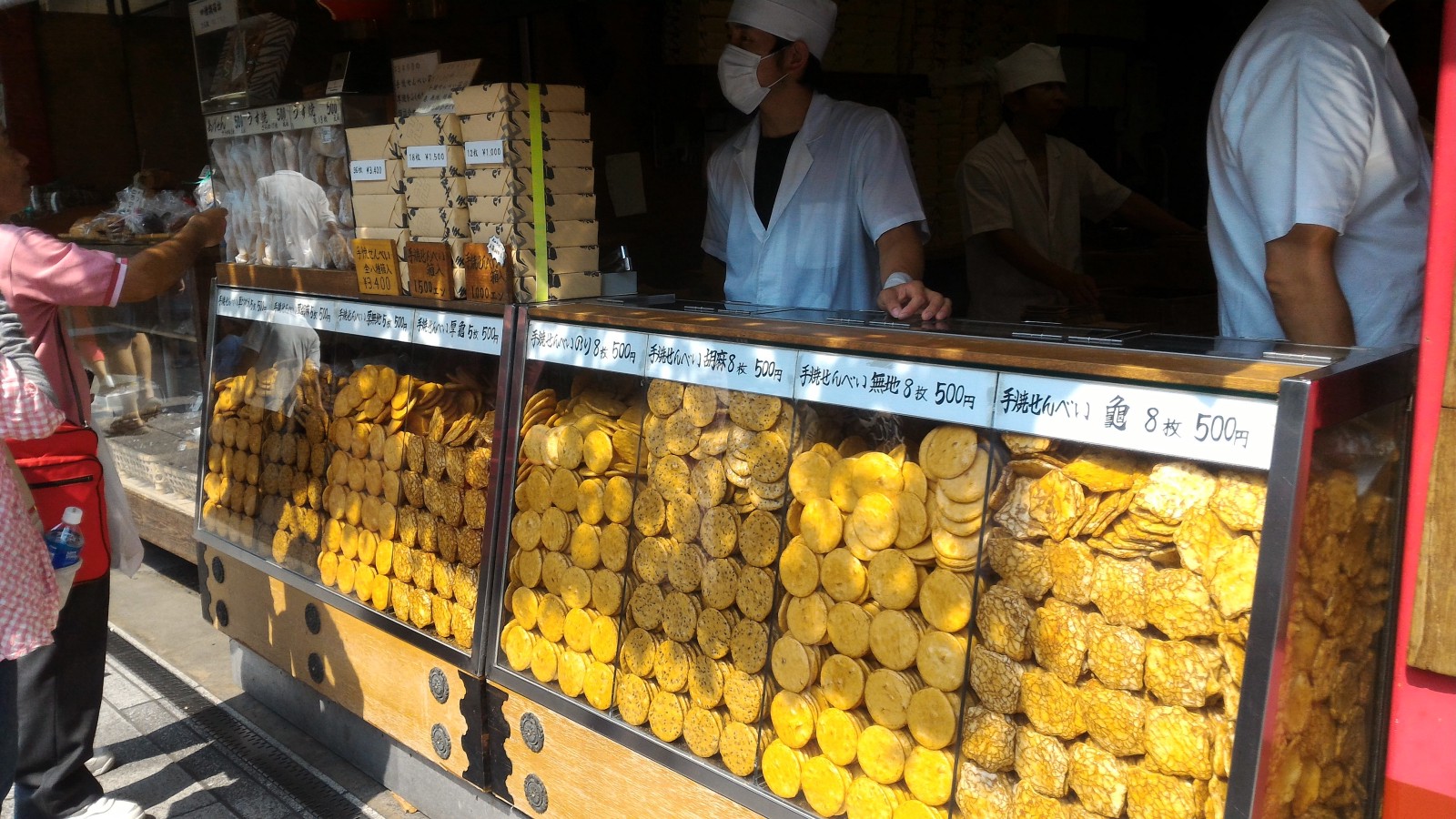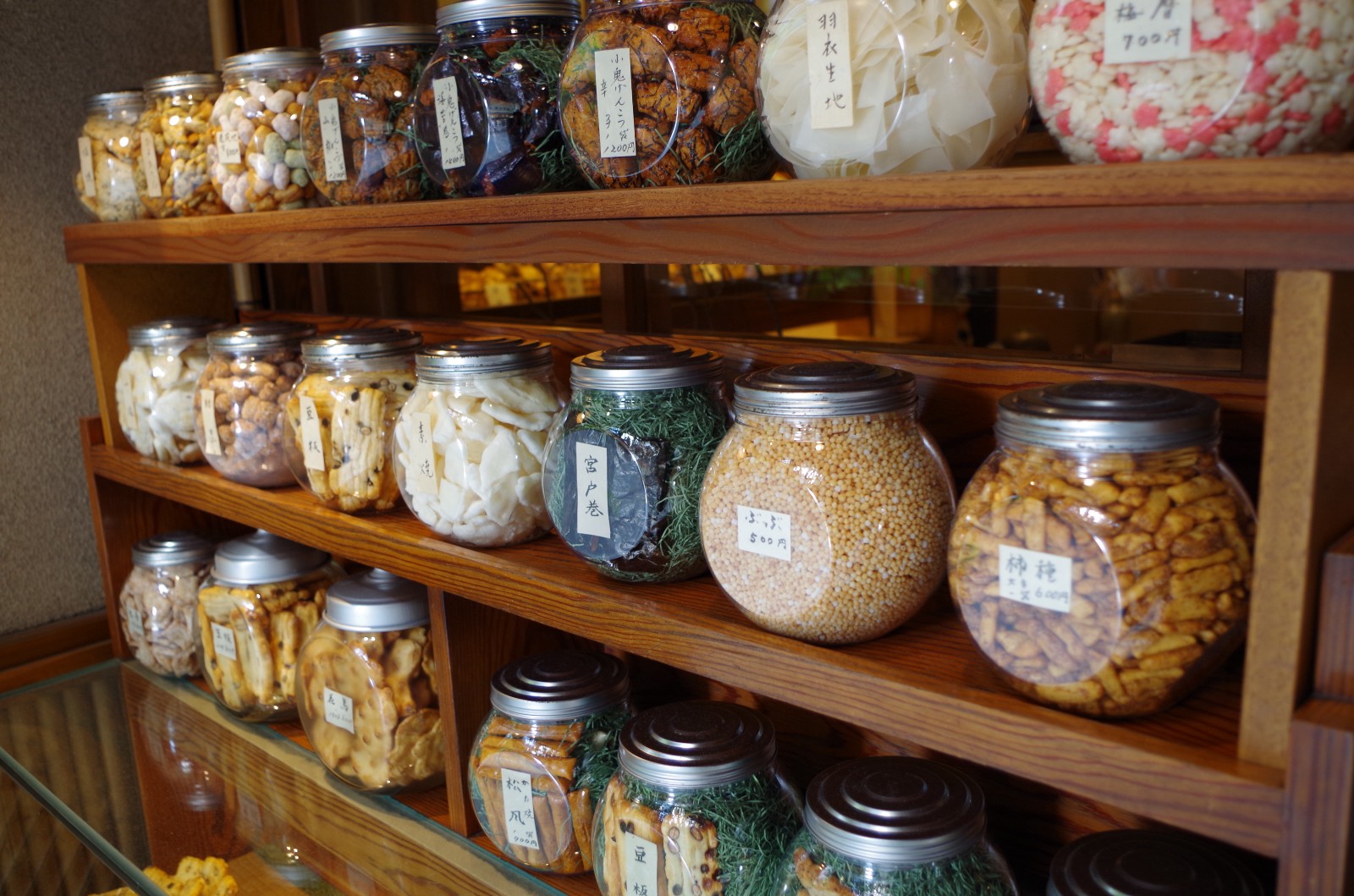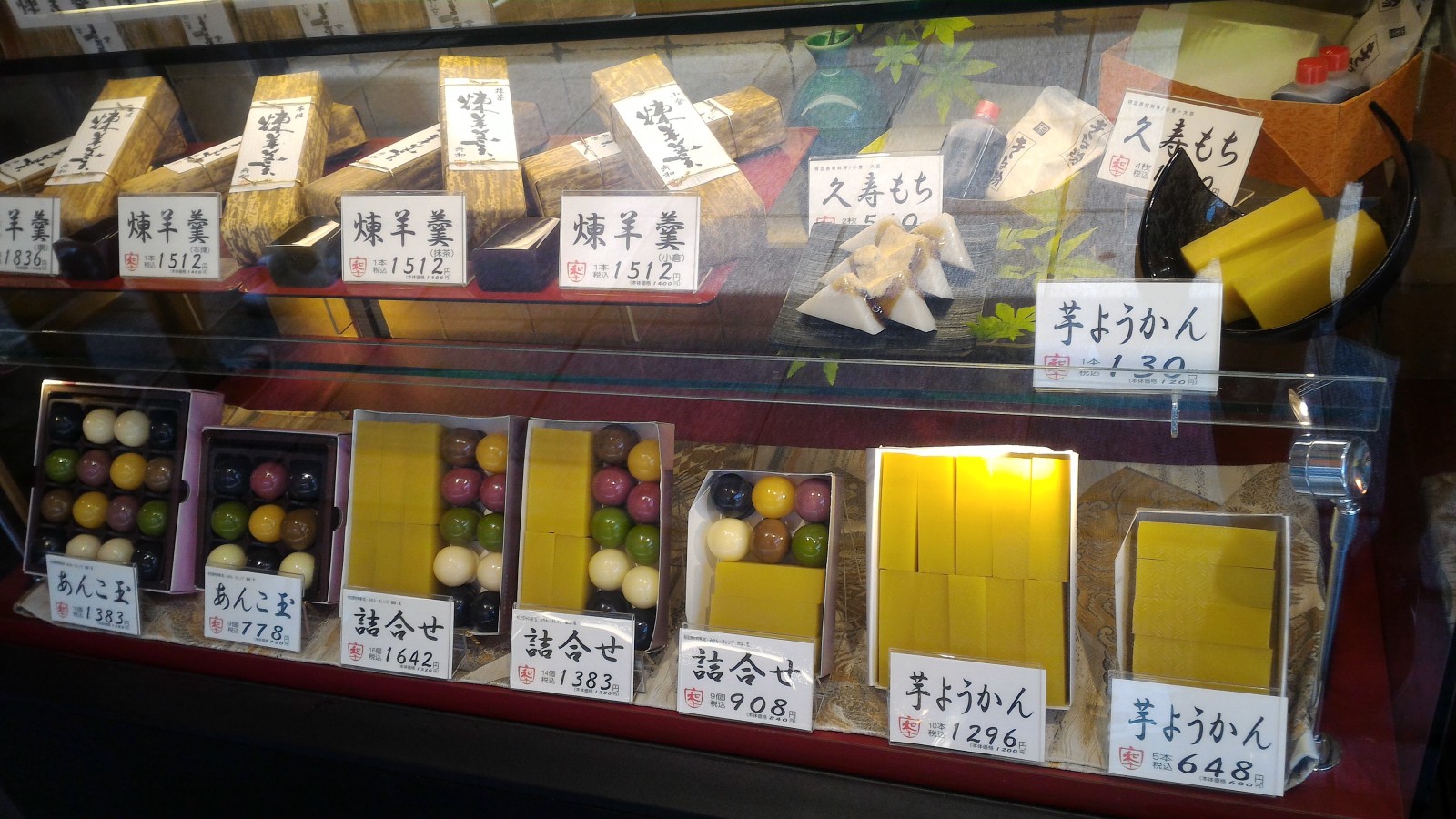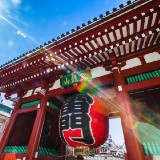Nakamise Shopping Street: Must-Try Asakusa Street Food
Enjoy Tokyo's street food! Nakamise is a traditional shopping street located at Sensoji Temple, Asakusa
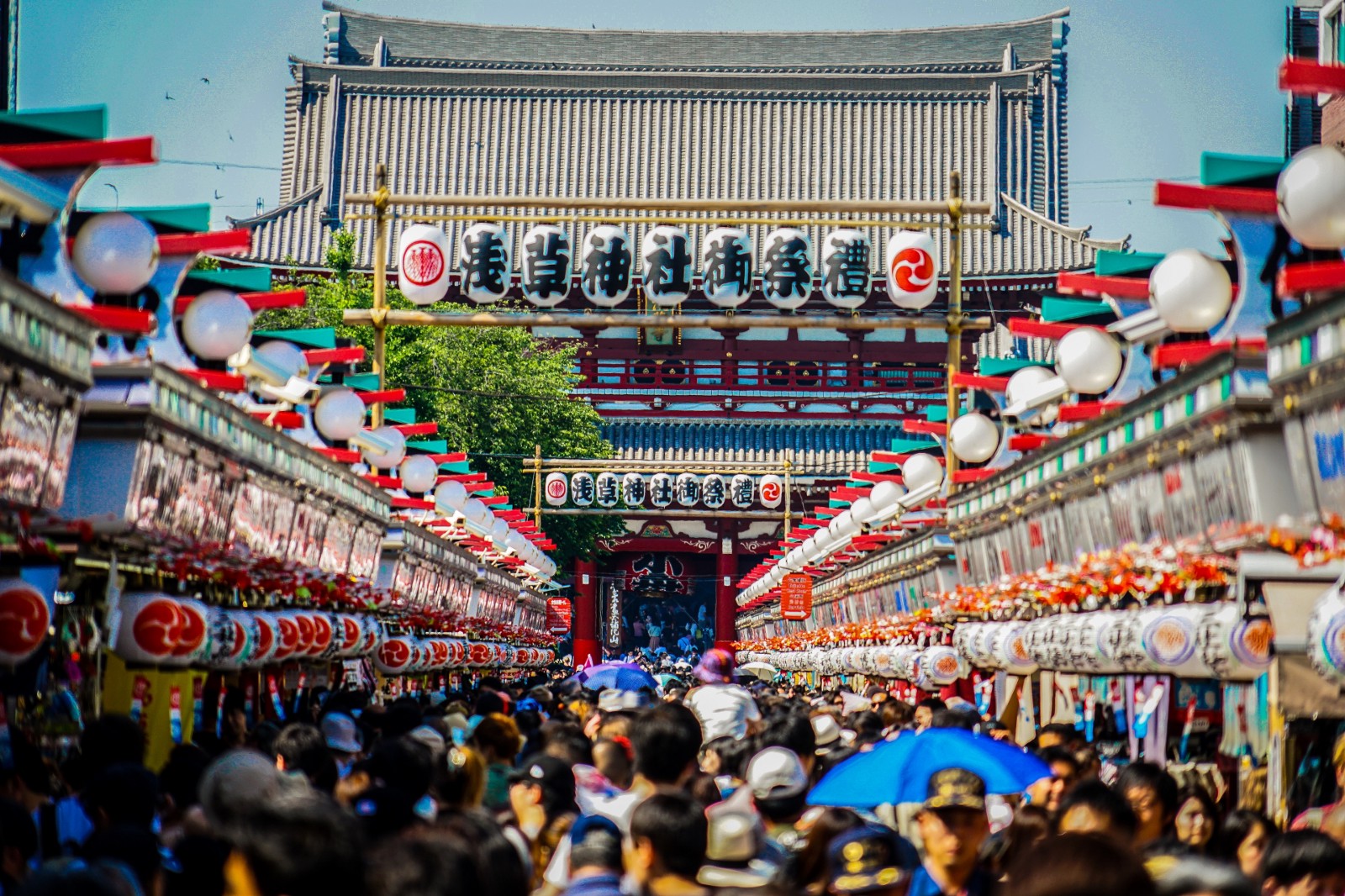
Asakusa, Tokyo’s most popular tourist destination, is renowned for its historical sites and nostalgic downtown atmosphere. The area attracts both Japanese and international visitors throughout the year. The symbol of Asakusa is Sensoji Temple, the oldest temple in Tokyo, which welcomes around 30 million visitors annually. After passing through the iconic Kaminarimon Gate, visitors can stroll along Nakamise Street, a must-visit spot in the Asakusa area.
Related: Best 6 Street Food in Asakusa
For a general overview of the Asakusa area, check out our All-in-One Guide to Asakusa.
*Please note that this article contains affiliate links.
What is Nakamise Street?
Nakamise Street (仲見世通り)is one of Japan’s oldest shopping avenues, extending approximately 250 meters from the iconic Kaminarimon (Thunder Gate) to the Hozomon (Treasure House Gate) of Senso-ji Temple in Asakusa, Tokyo. This historic thoroughfare comprises around 89 shops, with 54 on the east side and 35 on the west, offering a variety of traditional snacks, sweets, and souvenirs. It takes about 10 minutes to walk through, but that’s only if you resist the temptation to stop for shopping or eating!
The origins of Nakamise Street date back to the early 18th century, during the Edo period, when local residents were granted permission to open shops along the temple’s approach in exchange for maintaining the temple grounds. This arrangement fostered a bustling marketplace that catered to the needs of pilgrims visiting Senso-ji Temple.
A Resilient Cultural Staple
Over the centuries, Nakamise Street has witnessed numerous transformations. In 1885, the original shops were reconstructed using Western-style brick buildings following an order from the Tokyo government. However, these structures were destroyed during the Great Kanto Earthquake in 1923. The street was rebuilt in 1925, only to face devastation again during the bombings of World War II. Despite these challenges, the resilience of the local community ensured the street’s revival, preserving its historical charm and cultural significance.
Nakamise Street Today
In recent years, Nakamise Street has undergone further enhancements to maintain its appeal and structural integrity. Notably, in 2024, the street’s buildings received new copper plate roofing, unveiled in March 2025, reflecting a commitment to preserving its historical aesthetics while ensuring durability.
Today, Nakamise Street remains a beloved destination for both locals and tourists, embodying the spirit of Asakusa and keeping a charming and lively ambiance in front of the city’s most important Buddhist Temple.
Best Food and Snacks in Nakamise Street
Nakamise Street is lined with shops and food stalls, making it an excellent place to sample authentic Japanese street food and look for traditional souvenirs. Visitors can enjoy “Tabearuki,” which means “walk-and-eat” in Japanese, while sightseeing at the historic temple.
In this article, I will introduce some must-try street food and snacks available on Nakamise Shopping Street. Let’s take a closer look!
Ningyo Yaki is the most popular souvenir from Asakusa and is sold at many shops on Nakamise Street. It’s a sweet cake filled with sweet red bean paste, usually in shapes of dolls,birds or Asakusa’s symbolic lantern “Kaminarimon”.
One of the most famous Ningyo Yaki shops is Kimura-ya, where visitors can also have fun watching the process of making the cakes. Check their traditional way to bake which hasn’t been changed nearly 100 years. Don’t forget to try it fresh, too!
2. Candies
Beautifully shaped candies are another popular souvenirs here. Colourful small candies are too cute to eat! They are often sold in beautiful traditional patterned cases.
This unrealistically beautiful candy is called “Amezaiku” which is a traditional Japanese candy craft art, shaping soft candy called mizuame by hand, scissors and tweezers.
One of the few shops that keep this art alive is located in Asakusa, offering a live demonstration by an experienced candy sculpting artist, where you can watch and learn how to sculpt and decorate Amezaiku.
<<Book your Amezaiku Candy Sculpting Workshop in Asakusa now!>>
3. Kaminari Okoshi
Another notable snack in Asakusa is Kaminari Okoshi, sweet puffed rice crackers that have been cherished by locals since the 18th century!
4. Kibi Dango
Kibi dango is sweet and soft rice cakes in a stick covered with Kinako flour (roasted soybean flour) which is one of traditional Japanese sweets from Edo period and at Kibi Dango Azuma in Nakamise street, you can enjoy their demonstration sale and try fresh.
5. Rice Crackers
6. Imo Yokan by Funawa
Imo Yokan is sweet potato jelly, which is a traditional Japanese confectionery. Funawa (舟和) is a long-established Japanese sweets shop and, indeed the creator of the Imo Yokan.
Nakamise Street Hours & Best Time to Visit
Business hours vary depending on the establishment, but on average, shops on Nakamise Street are usually open from 10:00 to 19:00, with some opening as early as 8:00 or closing as late as 20:00. Bear in mind that many shops also close relatively soon, after Sensoji’s Main Hall closes. As a popular passageway to Sensoji, the street can get very crowded during the day, so early morning visits will help to avoid the crowds.
How to Get to Nakamise Street
Nakamise Shopping Street is only few steps away from Asakusa station! There are several lines visitors can use:

-
Tokyo Metro Ginza Line: Disembark at Asakusa Station. From there, it’s approximately a five-minute walk to Nakamise Street.
-
Toei Asakusa Line: Alight at Asakusa Station. The shopping street is about a five-minute walk away.
-
Tobu Skytree Line: Get off at Asakusa Station. Nakamise Street is within a five-minute walking distance.
-
Tsukuba Express Line: Exit at Asakusa Station. It’s roughly a seven-minute walk to reach the shopping street.
Discover the depth of Asakusa with the “Asakusa Cultural Walk & Matcha Making Tour.” This small group tour, led by an English-speaking local guide, offers a fantastic opportunity to explore the rich history and cultural traditions of Asakusa in just three hours.
The tour begins with a visit to Sensoji Temple and includes unique experiences such as a tea ceremony using the highest quality matcha and a chance to cook Monjayaki, a must-try local dish in Tokyo.
For more details about the tour, please check the attached link!
<<Book your Asakusa Cultural Walk & Matcha Making Tour now!>>
Check out more unique shopping streets in Tokyo! ▶️ 10 Best Shopping Streets in Tokyo
Did you enjoy the list? For more info about the Asakusa area, please check out these articles, too!
Written by
"The world is my oyster." As a dedicated globetrotter and hammock enthusiast, I’ve spent years chasing new experiences, collecting stories, and discovering the world’s most incredible destinations. Born and raised in Japan, I’ve always had a deep connection to my roots, but my love for adventure has led me to spend over a decade exploring countries across the globe—from culture-rich cities to remote hideaways.
Travel isn't just a hobby for me; it's a lifestyle. I'm constantly searching for new ways to fuel my wanderlust. Over the years, I’ve developed a wealth of knowledge and a treasure trove of tips that make traveling more enjoyable, practical, and meaningful.
Through my experiences, I've come to appreciate not only the beauty of travel but also the importance of understanding diverse cultures, embracing the unfamiliar, and stepping out of my comfort zone. My travels have shaped who I am today, and I’m excited to share those lessons with others.
With Japan Web Magazine, I aim to offer practical advice, insider tips, and firsthand stories that help travelers navigate their journeys to Japan or setting off on a global adventure. From hidden gems in Japan to travel hacks that make any trip smoother, I hope my insights inspire you to embark on your own adventures and make the most of every moment. Let’s explore the world together!
You can also find my stories here ▶ https://medium.com/@nahobm





